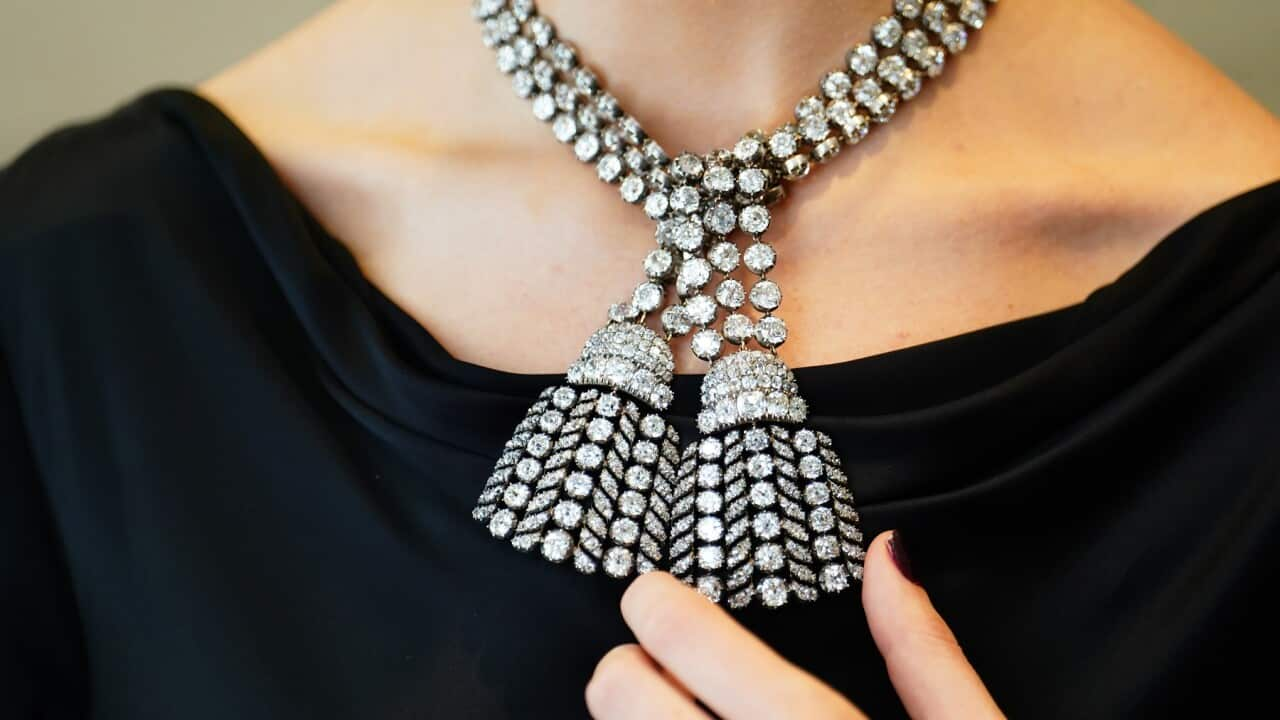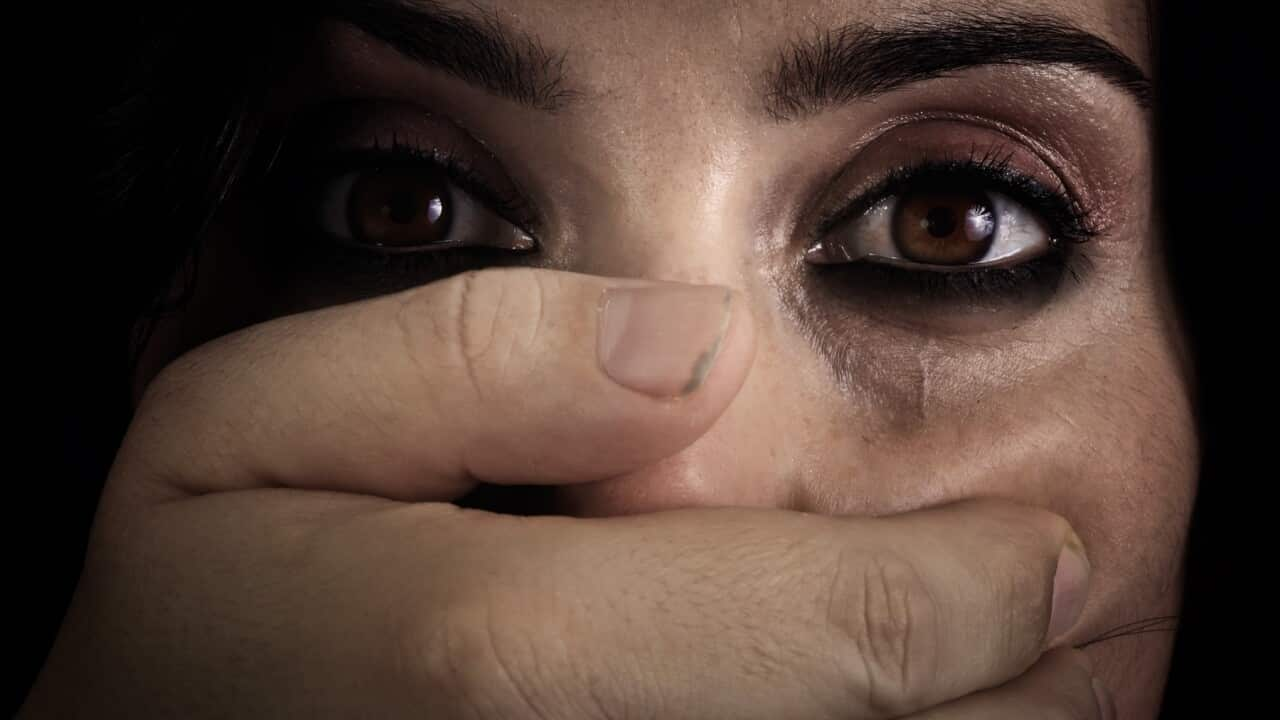English
Weighing 300 carats - the rare diamond necklace was made in the decade before the 1789 French Revolution.
Made up of three rows of diamonds with diamond tassels at each end, the piece has gone on public display for the first time in 50 years at Sotheby's London showrooms.
Andres White Correal is the Chairman and Head of the Royal and Noble Sales at Sotheby’s for Europe and the Middle East.
"It is so rare because diamonds were always repurposed and because the mines and of Golconda in India went extinct at the end of the of the 18th century, most of the 18th century jewels, in order to keep with fashion, were broken up. So to have an 18th century jewel intact, of this magnitude, of size and the importance of the diamonds, is exceptionally rare."
It is thought some of its diamonds may have come from the infamous Affair of the Diamond Necklace piece that tarnished the reputation of Marie Antoinette, the unpopular last queen consort of France before the French Revolution.
The necklace did belong to the Marquesses of Anglesey, an Anglo-Welsh aristocratic family, with members wearing it to the coronations of King George VI in 1937 and Queen Elizabeth in 1953.
Mt Correal says the necklace also acts a historical artefact - telling a story about a particular place and time.
"The most fascinating thing about a jewel is to try to hear what it's telling us. And when you see such a jewel, you get many indications from the start. This would have been worn only by royalty or the highest of aristocracy, because this is a fortune in diamonds in itself. Then, as it goes normally, you know who has owned it last but not first. So I was immediately compelled to try to get all the history about the necklace and it gives you, gives us, fantastic hints because after doing a lot of research, it's surfaced in different times during history, giving us diverse points of view for who it was made and by whom and in which country and in what exact year."
Mr Correal says the diamonds used were always repurposed.
This meant that most 18th century jewels, in order to keep up with fashion, were broken up.
As for the seller of the necklace - Mr Correal says it hasn't been seen in public for decades.
"It's been for 50 years in a very important Asian collection and it has not seen the light since. When I got to touch it, your question as to how much it is, it was very difficult to come to the price because it's such a rare object that you cannot compare it to something else.
The necklace will be offered for sale at Sotheby's "Royal & Noble Jewels" sale in Geneva on Nov. 11.
Italian
Con un peso di 300 carati, la rara collana di diamanti è stata realizzata nel decennio precedente la Rivoluzione francese del 1789.
Composta da tre file di diamanti con pendenti sempre di diamanti ad ogni estremità, l'opera è stata esposta al pubblico per la prima volta in 50 anni presso gli showroom di Sotheby's a Londra.
Andres White Correal è presidente e responsabile delle vendite reali e nobiliari di Sotheby's per l'Europa e il Medio Oriente.
"It is so rare because diamonds were always repurposed and because the mines and of Golconda in India went extinct at the end of the of the 18th century, most of the 18th century jewels, in order to keep with fashion, were broken up. So to have an 18th century jewel intact, of this magnitude, of size and the importance of the diamonds, is exceptionally rare."
Si pensa che alcuni dei suoi diamanti possano provenire dal famigerato ‘Affare della collana di diamanti’ che macchiò la reputazione di Maria Antonietta, l'impopolare ultima regina consorte di Francia prima della Rivoluzione francese.
La collana apparteneva ai Marchesi di Anglesey, una famiglia aristocratica anglo-gallese, i cui membri la indossarono in occasione delle incoronazioni di Re Giorgio VI nel 1937 e della Regina Elisabetta nel 1953.
Secondo Correal, la collana funge anche da manufatto storico, raccontando una storia di un luogo e di un'epoca particolari.
"The most fascinating thing about a jewel is to try to hear what it's telling us. And when you see such a jewel, you get many indications from the start. This would have been worn only by royalty or the highest of aristocracy, because this is a fortune in diamonds in itself. Then, as it goes normally, you know who has owned it last but not first. So I was immediately compelled to try to get all the history about the necklace and it gives you, gives us, fantastic hints because after doing a lot of research, it's surfaced in different times during history, giving us diverse points of view for who it was made and by whom and in which country and in what exact year."
Correal afferma che i diamanti utilizzati sono sempre stati riutilizzati per altri gioielli.
Ciò significa che la maggior parte dei gioielli del XVIII secolo, per stare al passo con la moda, venivano smontati.
Per quanto riguarda il venditore della collana, Correal afferma che non è stata vista in pubblico per decenni.
"It's been for 50 years in a very important Asian collection and it has not seen the light since. When I got to touch it, your question as to how much it is, it was very difficult to come to the price because it's such a rare object that you cannot compare it to something else.
La collana sarà messa in vendita all'asta “Royal & Noble Jewels” di Sotheby's a Ginevra l'11 novembre.




